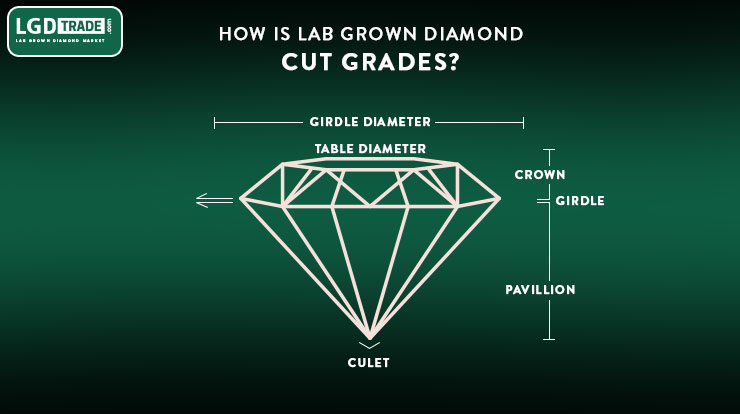
Any diamond is graded with 4C: Cut, Carat, Clarity, and Color. As you can see one of the top characteristics used to grade a lab-grown diamond is cut. The reason behind the importance of the diamond cut grade is its effect on the overall look and feel of the diamond. A finely cut diamond reflects most of the light and looks wider than the poorly cut diamond. That’s why the cut of the diamond is one of the important factors to define lab-grown diamond grading.
The most renowned and authenticated lab-grown diamond grading certifications are AGS and GIA. They use optical beauty and light performance of the diamond to grade it. They only grade princess cut and round cut lab-grown diamonds. AGS has stricter and rigorous standards and diamond cut grade chart compared to GIA. Both of these certifications are given based on predefined standards that scan and analyze various factors such as:
- Overall symmetry and proportion of the patterns of the diamond cut
- Reflection of rainbow light
- Reflection of white light
- Weight of the lab-grown diamond in comparison to its face-up size
- Diamond’s surface polish
- Light performance
It is advisable to get the diamond with “excellent” or “ideal” grading. If you are having a limited budget still get a diamond with “very good” grading and not less than that.
If you are unable to know the diamond cut grade given by any authorized organization, you can use the standard diamond cut grade chart as explained below:
- Crown Angles have to be 34 to 35.5 degrees. It is the top part of the lab grown diamond.
- Table Percentage must be 53 to 58%. It is the width of the top flat surface of the diamond compared to its complete width.
- Culet should be zero. It is the bottom part of the diamond and in a finely cut diamond, it is pointed or have smaller facets.
- Polish has to be excellent or at lease very good. You can define it by checking the shine and smoothness of the surface.
- Depth Percentage for a finely cut diamond is 59 to 62%. The bigger percentage depicts too big diamond and smaller depicts too shallow. The depth is top to bottom height compared to the overall width of the diamond.
- Girdle Thickness needs to be thin. A slightly thick is also fine, but shouldn’t be thicker than that. It is the edge that separates the pavilion and the crown section in the diamond.
- Pavilion Angle should be ideally 40.6 to 41 degrees. It is the inside bottom part of the diamond which is not visible to normal viewers. It can be only seen with lab equipment.
- Symmetry has to be “excellent” or “Very good”. It depicts a symmetric look of the diamond with its cuts. Every facet of the diamond needs to be centered and in the same line.
Read Related Blog: How to Choose Lab Grown Diamond Shape
These are the top features available in diamond cut grade chart to grade a lab grown diamond or just check the GIA or AGS certification.
Read Next Blog:
What’s The Difference Between IGI and GCAL Certified DiamondsW